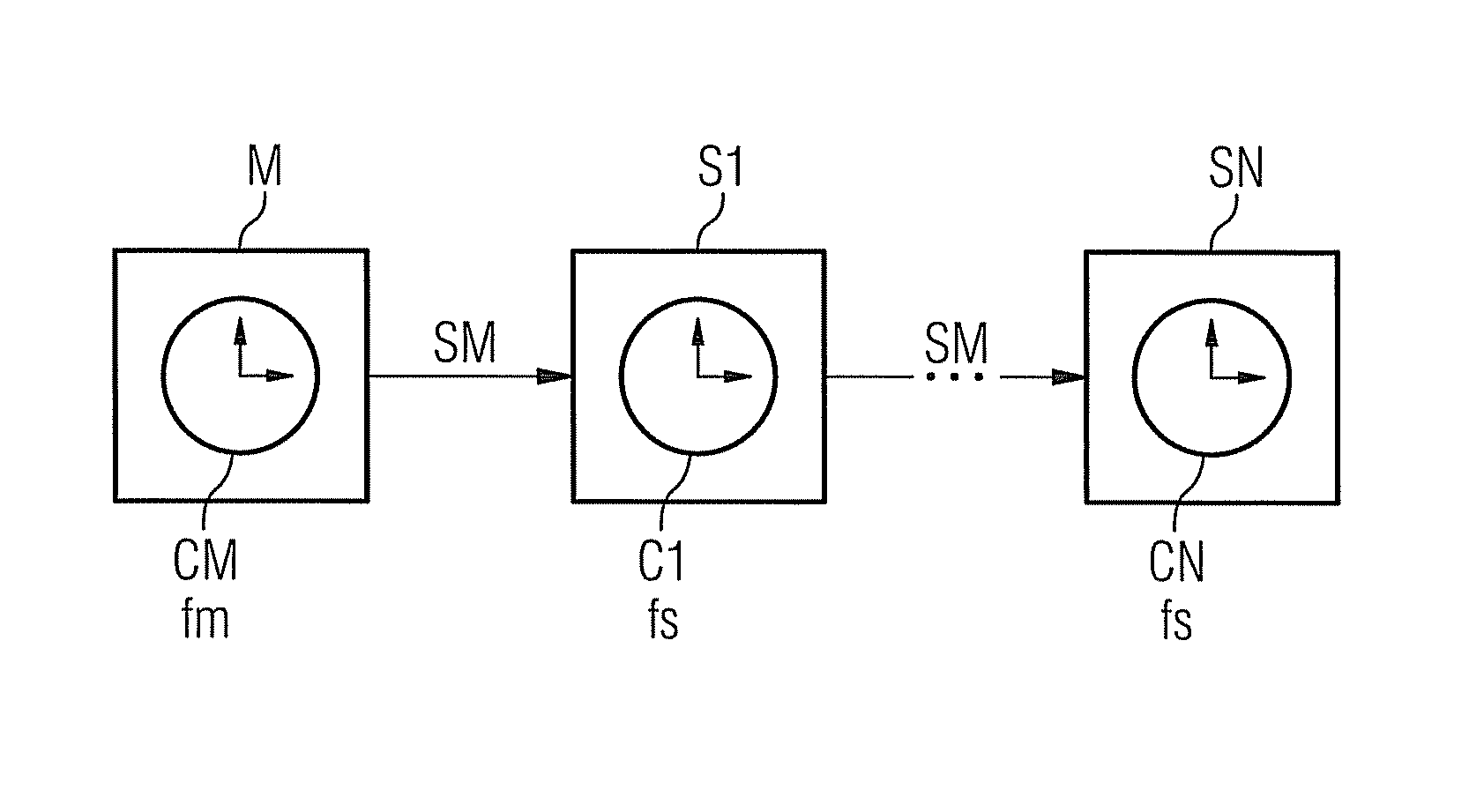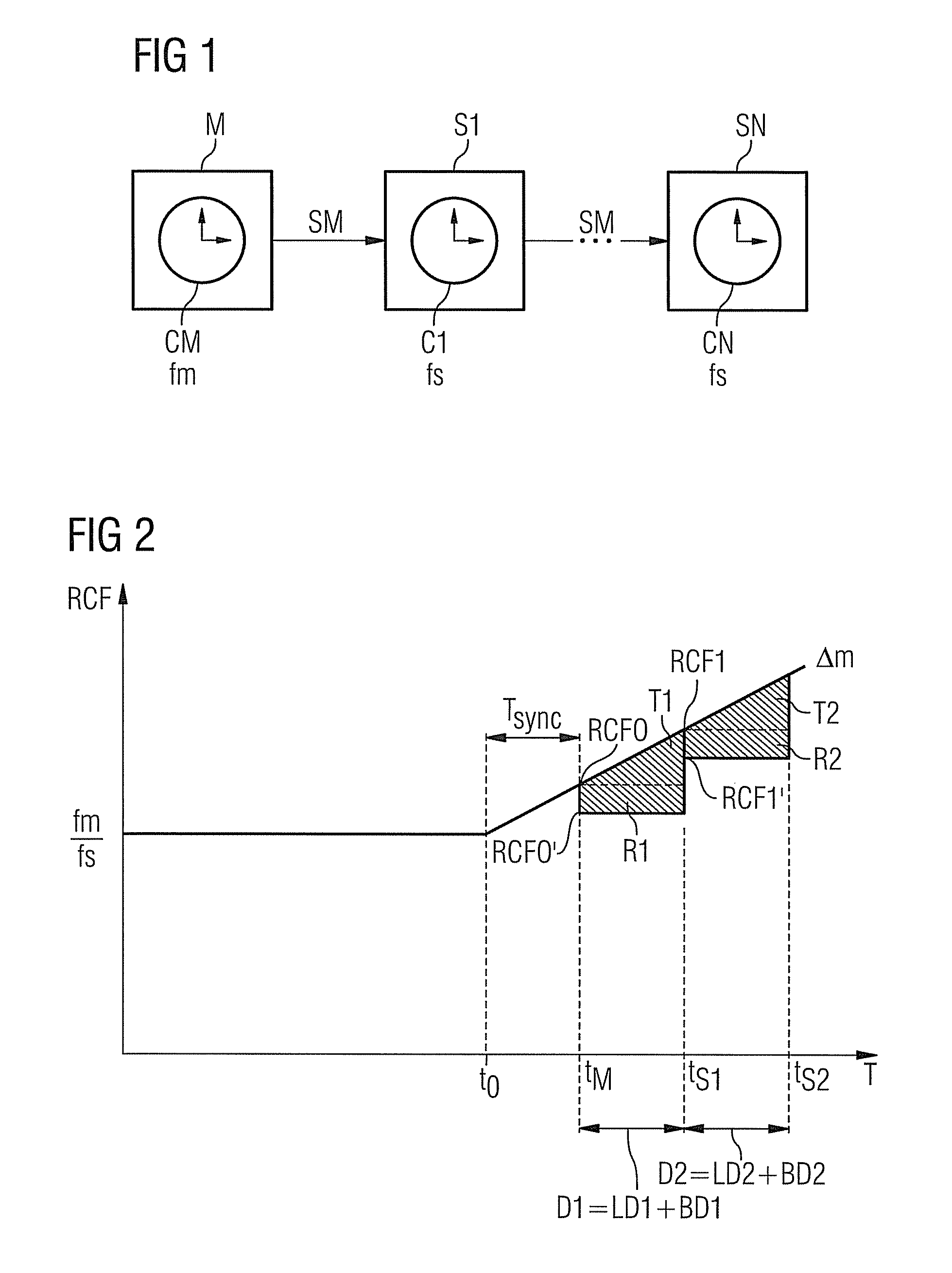Method for transmitting synchronization messages in a communication network
a communication network and synchronization message technology, applied in the field of communication network synchronization message transmission in the communication network and the corresponding communication network, can solve the problems of incorrect determination of the pulse counter status of the synchronization clock in the individual network nodes, imprecise synchronization of the internal clock of the network nodes, etc., and achieve the effect of precise synchronization of the individual internal clocks
- Summary
- Abstract
- Description
- Claims
- Application Information
AI Technical Summary
Benefits of technology
Problems solved by technology
Method used
Image
Examples
Embodiment Construction
[0031]The inventive method is preferably deployed in an industrial automation system, in which distributed components of the system communicate with one another, to control manufacturing sequences, e.g. in automobile production. To this end the individual components communicate with one another wirelessly and / or wired by way of a communication network. The components thus represent network nodes of the communication network.
[0032]In the embodiment according to FIG. 1 so-called slaves S1 to SN are shown by way of example as network nodes, each slave having a corresponding internal clock C1, . . . , CN. Each of these clocks operates at a predefined slave clock frequency fs, which can in some instances be different for different slaves. A so-called master element M is also provided in the communication network in FIG. 1, having a synchronization clock CM, which predefines a synchronization clock frequency fm, to which all the internal clocks C1, . . . , CN of the slaves are to be set. ...
PUM
 Login to View More
Login to View More Abstract
Description
Claims
Application Information
 Login to View More
Login to View More - R&D
- Intellectual Property
- Life Sciences
- Materials
- Tech Scout
- Unparalleled Data Quality
- Higher Quality Content
- 60% Fewer Hallucinations
Browse by: Latest US Patents, China's latest patents, Technical Efficacy Thesaurus, Application Domain, Technology Topic, Popular Technical Reports.
© 2025 PatSnap. All rights reserved.Legal|Privacy policy|Modern Slavery Act Transparency Statement|Sitemap|About US| Contact US: help@patsnap.com


